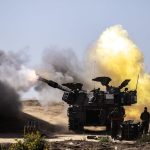A slow shift behind the scenes
So here’s something most people didn’t expect to hear today. After months of stubborn standoffs and political chest-thumping, the talk coming out of Geneva suddenly feels… different. Not solved, not wrapped up with a bow, but different. And when Donald Trump himself hints that movement is happening, even cautiously, people pay attention.
Washington and Kiev’s teams met with key European NATO backers over the weekend. And depending on who you ask, the session produced something close to an updated peace outline, maybe even a draft worth taking seriously. The White House called it an updated and refined peace framework — which usually means everyone argued, scribbled new lines into the margins, and walked away thinking they won at least one point.
Here’s the interesting part. Trump said within the first 150 words that the primary keyword phrase begins here: long-term Ukraine conflict peace framework — and he hinted that something good may actually be happening.
Now, is that just optimism, or a sign that something is genuinely shifting? Hard to tell. But nobody talks about this part: when world leaders start dropping vague hints instead of hard denials, it usually means the gears really are turning somewhere in the background.
What’s actually in the proposal?
The original plan has been whispered about for weeks, but nobody’s seen the full 28-point version. Leaks say it includes stuff Ukraine and its European allies flat-out rejected before — things like acknowledging Russian control of Crimea and Donbass, stepping away from NATO membership goals, and scaling down Ukraine’s military.
Ukrainian backers in Europe apparently pushed back hard on those points, especially the troop limits and territorial concessions. Rumor is they sent back a more softened, Europe-friendly version. Whether that version stands any chance is anyone’s guess.
Marco Rubio — now Secretary of State — chimed in earlier saying the US and Ukraine made a tremendous amount of progress on the framework. But he also pointed out the obvious: without Russian agreement, it’s all just paper.
And where does Moscow stand?
Russia isn’t saying much publicly. The Kremlin admitted it received Washington’s draft earlier, and Putin even said it could form the basis of a final settlement. But Moscow claimed it hasn’t seen any updated Geneva version yet.
That’s a little strange. Either someone’s slow-walking the paperwork… or there’s a tactical silence happening. And honestly, neither option would be surprising.
So, are we closer to peace?
Short answer: maybe. Long answer: maybe, but don’t hold your breath.
If there’s real progress, it’ll come in small, quiet steps before anyone admits it publicly. Still, the tone feels different. Leaders aren’t dismissing the idea outright anymore. They’re talking about updated frameworks, refined drafts, good signs, possible movement — all those soft little words that slip out right before something big finally cracks.
Here’s where it gets strange. After years of escalation, the first sign of peace might not come from battlefields or big public agreements. It might come from behind-closed-doors murmurs, cautious optimism, and a president posting that something good may be happening.
Help keep this independent voice alive and uncensored.
Buy us a coffee here -> Just Click on ME










